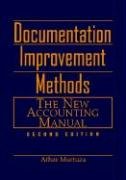Question
Ch. 1-2 Assignment (Total Points Possible: 100 Points) Assume a firm in November 1997 expects to report a tax loss of $250,000 for the tax
Ch. 1-2 Assignment (Total Points Possible: 100 Points)
Assume a firm in November 1997 expects to report a tax loss of $250,000 for the tax year 1997. The CFO argues that the firm should defer recognition of $50,000 of income until 1998, thus increasing the tax loss to be carried back to $300,000. The firm reported an annual taxable income of $100,000 in each of the past 5 years. The firm expects to earn $500,000 in 1998 (before any shifting of income). Generally, negative income (losses) do not get a tax benefit unless they are carried back or carried forward to offset taxable income. Assume that firms in 1997 were allowed to carryback a loss in the current year for three tax years to offset taxable income previously recognized and earn a tax refund equal to the dollars carried back times the current year tax rate. However, if there is not sufficient taxable income to apply the loss to in the last three years, the firm will not a get a tax refund related to the loss this year. Instead, it will need to carry it forward to offset taxable income in years t+1 (next year) up through year t+15. The benefit in these future years is that the taxpayer will have lower taxable income (original taxable income without the loss carryforward reduced by the loss carried forward). Assume the tax rate in all years is 35%. This problem is a modified version of Tax-Planning Problem 2-23 from Ch. 2.
(12 points) What will be the amount of tax refund in 1997 if the firm does NOT defer the $50,000 of income until 1998?
(12 points) What will be the amount of tax due on the taxable income in 1998 if the firm does NOT shift the $50,000 to 1998?
(12 points) What will be the amount of tax refund in 1997 if the firm does defer the $50,000 of income to 1998?
(12 points) What will be the amount of tax due on the taxable income in 1998 if the firm does shift the $50,000 to 1998?
(10 points) If the firm has no investment opportunities (no alternative return options) to use the tax savings from deferring the $50,000 to 1998 (answer to c. a.) and the time value of money does not matter (indifferent between paying the same cumulative amount in tax over time regardless of whether tax paid earlier or later), which option will the CFO prefer? When making this decision, assume that the CFO only is considering the implications of the decision across year 1997 and 1998 together (answers a. d. above) and not future tax years beyond that. Select one of the below decisions. A. Defer the $50,000 of income to 1998. B. Do not defer the $50,000 of income to 1998. C. The CFO will be indifferent (value equally) the option to defer vs. not defer as the pre-tax cash flows and tax consequences will be the same over time.
Step by Step Solution
There are 3 Steps involved in it
Step: 1

Get Instant Access to Expert-Tailored Solutions
See step-by-step solutions with expert insights and AI powered tools for academic success
Step: 2

Step: 3

Ace Your Homework with AI
Get the answers you need in no time with our AI-driven, step-by-step assistance
Get Started


